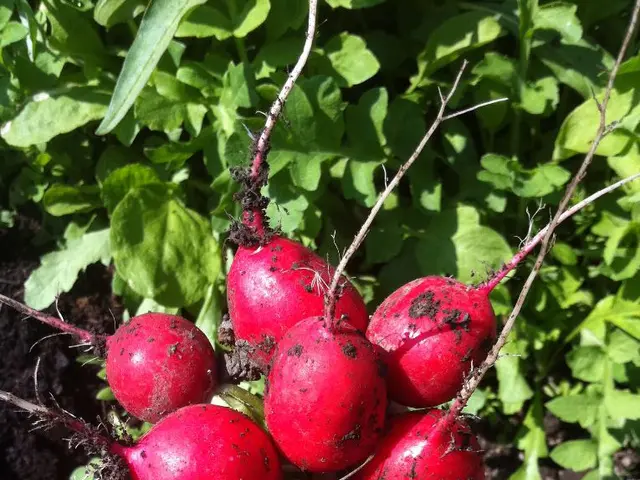Guide to Cultivating Amaranthus: A Step-by-Step Process
Growing Amaranthus: Ornamental and Edible Delights
Amaranthus, a short-lived, frost-tender plant, is both ornamental and edible, making it a popular choice among gardeners. Known for its dramatic and showy appearance, the plant boasts enormous tassel-like crimson, purple, or green flowers, or brilliantly coloured foliage.
There are several names associated with Amaranthus, with 'Love Lies Bleeding' (tassel flower) being among the most popular for flowering varieties. For edible use, names include amaranth, Caribbean spinach, Inca wheat, Chinese amaranth, callaloo, tampala, and Chinese spinach. Both the leaves and seeds of this nutritious plant are edible, with a taste similar to spinach for the leaves and a nutty flavour for the gluten-free seeds, which are high in protein and calcium.
In frost-free countries, Amaranthus can be invasive, but this is not an issue in the UK. The plant makes a good cut flower and can also be dried for arrangements. It is also beneficial for bird life as birds love to eat the seeds.
Growing Amaranthus: A Step-by-Step Guide
Despite its exotic looks, Amaranthus is easy to grow from seed. It is a sun-loving, half-hardy annual that can either be sown under cover in early spring for early summer color or direct in the soil outdoors. Amaranthus is great for flower and foliage interest as part of a bedding scheme in borders with similarly exotic-looking flowers like dahlias, zinnias, and sunflowers, or it can be grown in an edible garden for harvesting. Smaller varieties can also be grown in pots.
How to Sow Amaranthus
Start seeds under cover around March, sowing onto moist seed compost. Avoid covering the compost as the seed needs light to germinate. Instead, cover with a thin layer of perlite, or use polythene or a propagator to ensure the seed doesn't dry out. Keep the seed at a temperature of 20°C for reliable germination. Once the seedlings are large enough to handle, transplant into individual small pots or modular trays and grow on until sufficiently large to plant out.
Alternatively, direct sow outside into moist soil in mid to late spring. Thin seedlings to between 30-60 cm apart, depending on the ultimate size of the variety.
How to Plant Amaranthus
Harden off plants growing under cover to acclimatize them to the outside before planting out in late spring or early summer once the frosts are past. Plant into soil that is not too rich, spacing plants 30-60cm apart depending on size. Water immediately after planting.
Caring for Amaranthus
After planting out, keep watered during dry spells for the first few weeks until established and then water only during dry weather. Tall-growing varieties may need staking or supporting.
Harvesting Amaranthus
Both the leaves and seeds are edible. Pick leaves while small and tender to use in salads, or use young or older leaves in stir-fries, curries, and many other dishes. The seeds are similar to quinoa with a mild nutty flavour and can be added to a range of dishes.
Harvest the ripe seeds in late summer or autumn by either shaking the seed heads over a container or into a bag while still on the plant. Alternatively, cut off the seed head and hang it upside down enclosed by a bag for a few days until the seeds fall.
Growing Amaranthus: Problem-Solving
Amaranthus is mostly trouble-free to grow. Virus diseases can occur when plants develop pale, unhealthy, or mottled leaves, but there is no cure, and affected plants should be destroyed. Because aphids transmit viruses, inspect plants regularly, as small infestations can be controlled by hand-squashing, or by simple chemical-free methods.
- In an ornamental setting, one could incorporate raised beds to grow Amaranthus, creating a visually appealing display with the plant's vibrant colors, be it the tassel-like flowers or brilliant foliage, alongside other eye-catching plants like dahlias, zinnias, and sunflowers.
- For those intrigued by healthy-cooking and food-and-drink, Amaranthus could be a valuable addition to the home-and-garden, providing a nutritious source of leaves with a taste similar to spinach, as well as seeds, which are high in protein and calcium, offering a nutty flavor and resembling quinoa in taste and primary uses.
- With Amaranthus plants offering both ornamental delight and edible sustenance, cultivating them can contribute to a lifestyle that emphasizes sustainability and self-sufficiency, allowing for greater control over food sources while also providing colorful decoration for the home-and-garden.








